Technologies
Sony Pulse Explore Earbuds Hands-On: Absurdly Good Sound
While designed to be used with Sony’s PlayStation 5 gaming console, they’re among the best wireless earbuds for music listening.
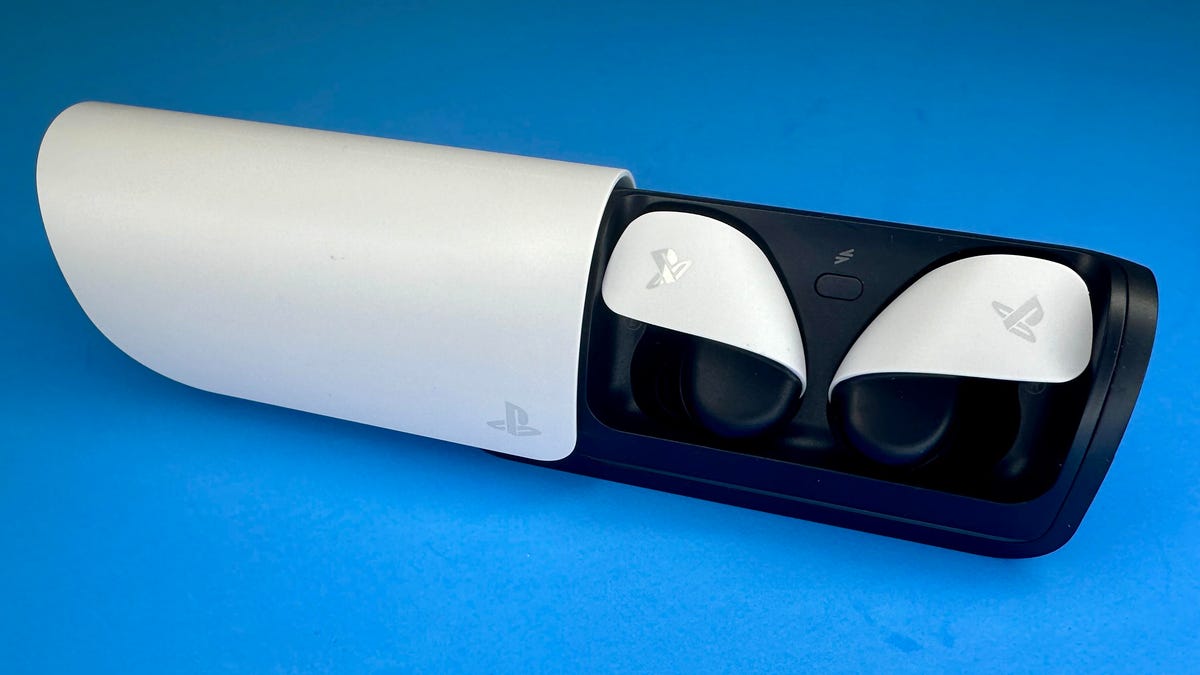
Sony’s upcoming Pulse Explore wireless earbuds are weird — but in a surprisingly good way.
Due to ship Dec. 6 and available for preorder now for $200, the buds are ostensibly low-latency gaming earbuds. Somewhat bulky and a little bit strange looking in your ears, they’re designed to be used with Sony’s PS5 gaming console and its new PlayStation Portal remote player, as well as Windows and Mac computers. (The included PlayStation Link USB adapter is required for PS5 and Nintendo Switch use.) Like most other wireless gaming earbuds I’ve encountered, the Pulse Explore can also be paired with your smartphone via Bluetooth.
That they’re very good gaming earbuds isn’t surprising. However, that they’re as good as they are for music listening is a revelation. In fact, after trying an early review sample in advance of the launch, I found that they sound clearer and more articulate than Sony’s flagship WF-1000XM5 earbuds, with tight, powerful bass. That doesn’t necessarily mean they sound better than XM5s, which sound a little fuller. But I wasn’t expecting them to compete at all with the XM5s for music listening.
The reason for that sound seems largely due to the buds’ planar magnetic drivers, which are typically found in high-end over-ear audiophile headphones and rarely in earbuds. Sony recently acquired Audeze, which is known for its planar magnetic drivers and in 2021 made a pair of $1,299 wired planar magnetic earbuds called the Euclid that are currently listed as «sold out.» Planar magnetic drivers are prized for their sonic accuracy and being less prone to distortion. They’re typically larger than standard dynamic drivers found in the majority of headphones and harder to drive.

Normally, I’d say that $200 for a pair of gaming earbuds, especially ones like the Pulse Explore that don’t exactly have a premium look and feel, is pretty pricey. (They’re an all-plastic affair and are relatively lightweight for their size.) But that Sony and presumably Audeze have brought this driver technology to a pair of $200 earbuds is kind of wild. And Sony’s upcoming $150 Pulse Elite headset, due to ship on Feb. 21, also features planar magnetic drivers.
To get to that price point, Sony has stripped out some features that you’d find in today’s premium true-wireless earbuds, including its WF-1000XM5 buds. The Pulse Explore have no active noise canceling (aka ANC), no ear-detection sensors that automatically pause your music when you take the earbuds out of your ears, and no companion app with an equalizer or other features (that I’m aware of). These are truly bare-bones earbuds. In fact, the volume control buttons only worked when I was using the buds with my PS5, and there were no controls for skipping tracks forward or back when I was using the buds with an iPhone 15 and Google Pixel 7.
Truth be told, I generally use full-size headphones for gaming and so do my teenage kids, who I usually ask for feedback when testing gaming headsets. As I said, from my limited testing time, they sounded very good and performed well as gaming earbuds. They’re compatible with Sony’s 3D Audio supported games. (I played Marvel’s Spider-Man: Miles Morales and Tony Hawk’s Pro Skater.) Sony says they’ll «enhance your perception in 3D Audio supported PS5 games as audio cues are positioned with an incredible degree of accuracy across all three dimensions.» And microphone performance seemed quite good for multiplayer games.
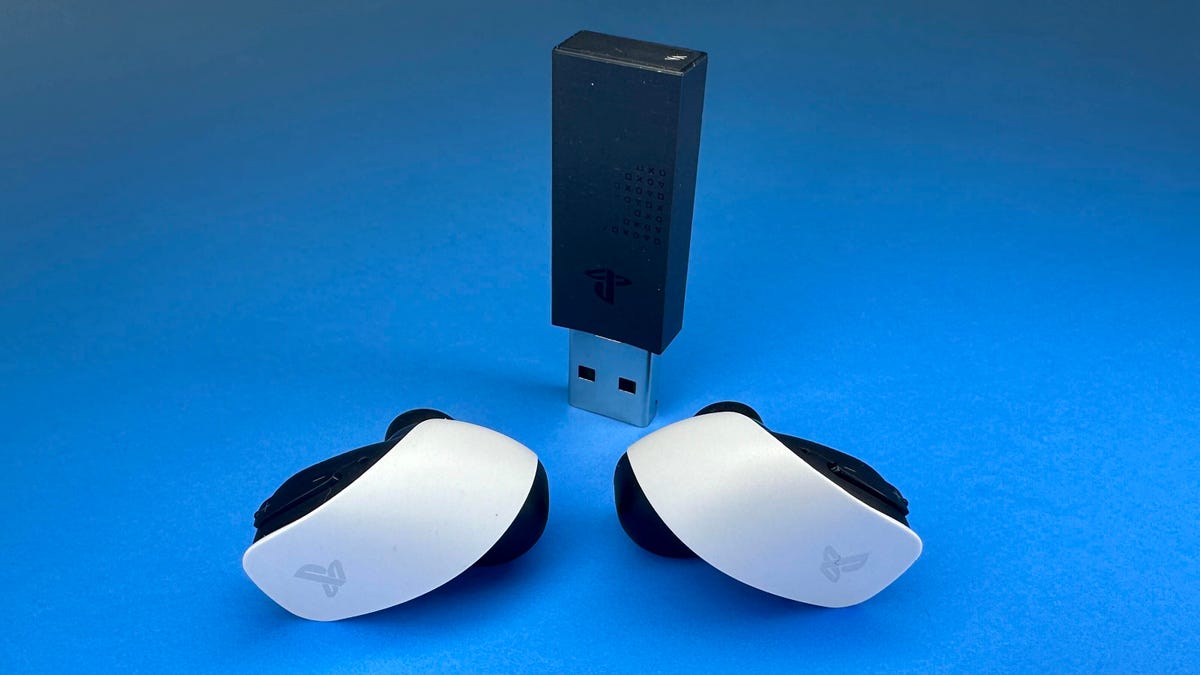
It was simple to connect the earbuds to the PS5. You plug in the PlayStation Link USB adapter to the USB-A port on the PS5, then press the link button on the case while the earbuds are in the case, and you’re quickly connected to the PS5. What’s also nice is that you can simultaneously be connected to your phone via Bluetooth and take a call if it comes in while you’re gaming. While you could pair to a PC via Bluetooth, you’ll likely want to use the PlayStation Link USB adapter with your Mac or Windows PC because it creates a lossless low-latency connection with the buds. With the Nintendo Switch, you’ll need a USB-C to USB-A adapter to plug in the dongle, but no dongle is required for the PlayStation Portal remote player. (It’s a shame you need a dongle for the PS5, as it’s unclear why the technology can’t be built into the unit like it is with the Portal.)
As far as comfort goes, the buds come with four sets of ear tips, so you should find a set that fits your ears well. Overall, I found them comfortable to wear over long periods. (The earbuds are rated for five hours of battery life at moderate volume levels with two extra charges in their fairly larger charging case.) While I was able to get a tight seal with the largest set of ear tips, I ended up switching to another set with a more conical shape that fit my ears even better. (Since I test a lot of earbuds I have a lot of extra ear tips to choose from.)
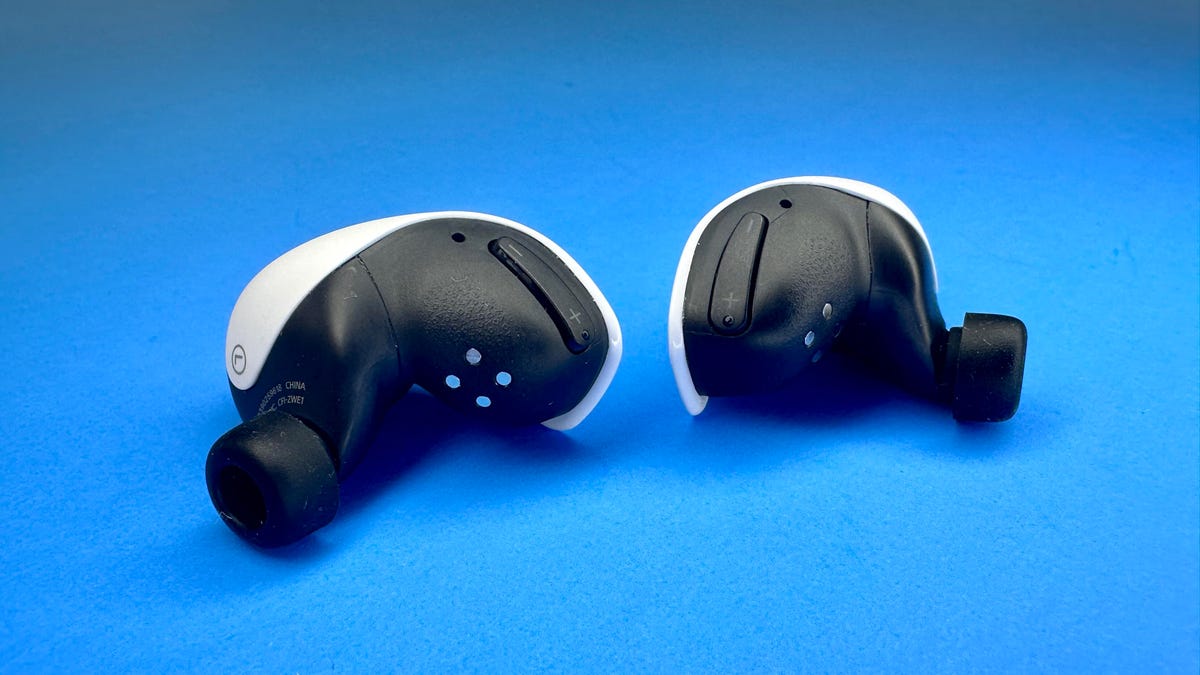
I spent more time listening to music than gaming with them because I was surprised how good they sound. I asked Sony whether they supported its LDAC audio codec for Bluetooth streaming, but I never got a response. However, it appears they don’t as my Pixel 7 showed that the AAC audio codec was supported for HD audio in the settings for the buds, not LDAC.
While they may not offer the same sound quality as high-end over-ear planar magnetic headphones, they exhibit some of the same sound traits: well-balanced audio that’s clear, accurate and open (wide sound stage), with bass that goes deep but is well defined. These are earbuds that will make you want to do a deep dive into your music library to hear how they sound with various tracks. While they may be a little harder to drive, I didn’t have any issue with how loud they play using my iPhone 15. (The volume was slightly lower with the Pixel 7.) But the WF-1000XM5 buds do play louder, and, as I said, sound a bit fuller with bigger bass.
I was also impressed with their voice-calling capabilities. Callers told me they did a very good job suppressing background noise while my voice came through relatively clearly — even on the noisy streets of New York. They’re in the upper echelon of earbuds for voice calling.
As noted, they’re pretty lacking in the features department when it comes to what people have come to expect from premium earbuds that cost $200, the street price of Apple’s AirPods Pro 2. But if you get a tight seal, the passive noise isolation is good (a decent amount of ambient noise is muffled) and the earbuds sound great and work well for making calls, which is all that a lot of people are looking for.
I’ll post a full review once I’ve spent more time with the Pulse Explore earbuds, but for now I’ll say they’ve exceeded my expectations. Sure, plenty of people use their gaming headset as everyday headphones, particularly while working at their desk. But the Pulse Explore also make a strong case to be your everyday earbuds despite their decided lack of features.
Technologies
Today’s NYT Mini Crossword Answers for Saturday, Dec. 27
Here are the answers for The New York Times Mini Crossword for Dec. 27.

Looking for the most recent Mini Crossword answer? Click here for today’s Mini Crossword hints, as well as our daily answers and hints for The New York Times Wordle, Strands, Connections and Connections: Sports Edition puzzles.
Need some help with today’s Mini Crossword? It’s pretty long for a Mini Crossword, and some of the clues are tricky. The answer to 10-Across is not an expression I use, for sure. Read on. And if you could use some hints and guidance for daily solving, check out our Mini Crossword tips.
If you’re looking for today’s Wordle, Connections, Connections: Sports Edition and Strands answers, you can visit CNET’s NYT puzzle hints page.
Read more: Tips and Tricks for Solving The New York Times Mini Crossword
Let’s get to those Mini Crossword clues and answers.
Mini across clues and answers
1A clue: Fashionable
Answer: HIP
4A clue: Product sold on «The Office»
Answer: PAPER
6A clue: One writing a performance review
Answer: MANAGER
8A clue: With 5-Down, redundant synonym of «outcome»
Answer: END
9A clue: Quiet ___ mouse
Answer: ASA
10A clue: Gives constant compliments, in slang
Answer: GASESUP
12A clue: Ski mountain bump
Answer: MOGUL
13A clue: Uneasy feeling
Answer: ANGST
Mini down clues and answers
1D clue: Personally involved
Answer: HANDSON
2D clue: Hoppy beer, for short
Answer: IPA
3D clue: Mythical horse whose name is an anagram of 10-Across
Answer: PEGASUS
4D clue: Last word in the palindromic sentence «A man, a plan, a canal …»
Answer: PANAMA
5D clue: See 8-Across
Answer: RESULT
6D clue: Ryan of «When Harry Met Sally …»
Answer: MEG
7D clue: Genre for Playboi Carti and Cardi B
Answer: RAP
11D clue: Something in an Easter basket
Answer: EGG
Don’t miss any of our unbiased tech content and lab-based reviews. Add CNET as a preferred Google source.
Technologies
Today’s NYT Connections: Sports Edition Hints and Answers for Dec. 27, #460
Here are hints and the answers for the NYT Connections: Sports Edition puzzle for Dec. 27, No. 460.
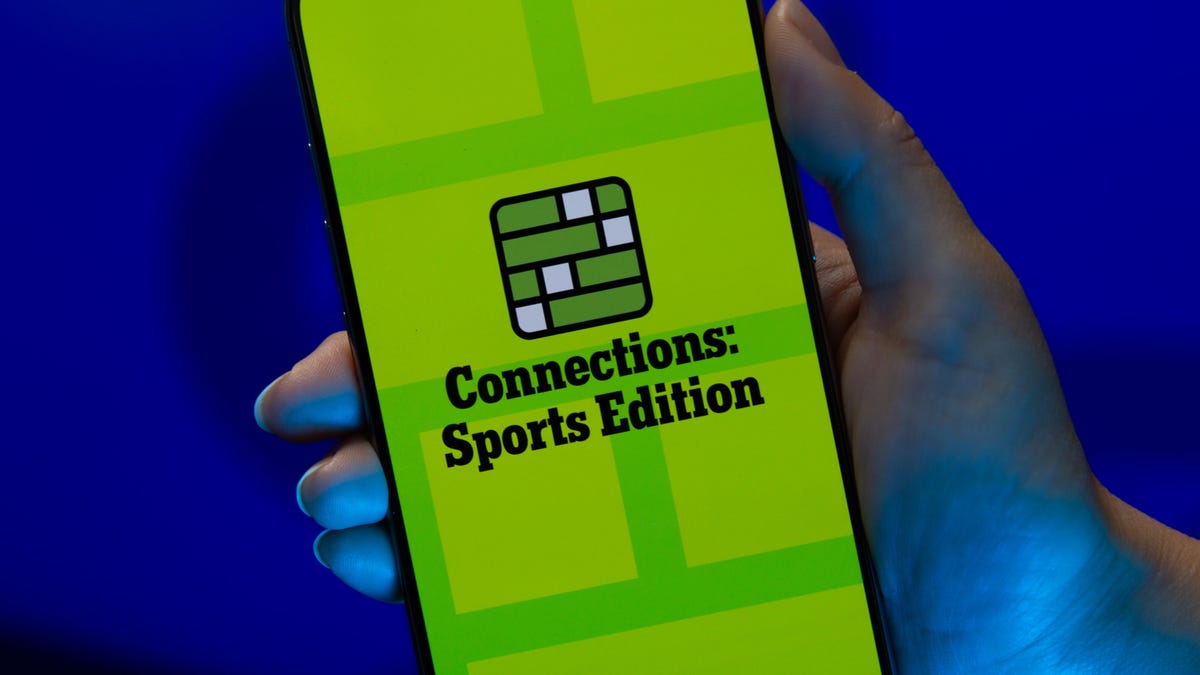
Looking for the most recent regular Connections answers? Click here for today’s Connections hints, as well as our daily answers and hints for The New York Times Mini Crossword, Wordle and Strands puzzles.
Today’s Connections: Sports Edition is a real challenge. That purple category wants you to hunt out something related in four different words, and it’s a toughie. If you’re struggling with today’s puzzle but still want to solve it, read on for hints and the answers.
Connections: Sports Edition is published by The Athletic, the subscription-based sports journalism site owned by The Times. It doesn’t appear in the NYT Games app, but it does in The Athletic’s own app. Or you can play it for free online.
Read more: NYT Connections: Sports Edition Puzzle Comes Out of Beta
Hints for today’s Connections: Sports Edition groups
Here are four hints for the groupings in today’s Connections: Sports Edition puzzle, ranked from the easiest yellow group to the tough (and sometimes bizarre) purple group.
Yellow group hint: Something you save.
Green group hint: An Olympic sport.
Blue group hint: Toronto pitchers.
Purple group hint: Think about the alphabet and look for something hidden.
Answers for today’s Connections: Sports Edition groups
Yellow group: Memento.
Green group: Types of wrestling.
Blue group: Blue Jays to win Cy Young Award.
Purple group: Ends in a homophone for a letter of the alphabet.
Read more: Wordle Cheat Sheet: Here Are the Most Popular Letters Used in English Words
What are today’s Connections: Sports Edition answers?
The yellow words in today’s Connections
The theme is memento. The four answers are collectible, keepsake, memorabilia and souvenir.
The green words in today’s Connections
The theme is types of wrestling. The four answers are arm, freestyle, Greco-Roman and sumo.
The blue words in today’s Connections
The theme is Blue Jays to win Cy Young Award. The four answers are Clemens, Halladay, Hentgen and Ray.
The purple words in today’s Connections
The theme is ends in a homophone for a letter of the alphabet. The four answers are batter’s eye (I), blue jay (J), golf tee (T) and pool cue (Q).
Don’t miss any of our unbiased tech content and lab-based reviews. Add CNET as a preferred Google source.
Technologies
Today’s Wordle Hints, Answer and Help for Dec. 27, #1,652
Here are hints and the answer for today’s Wordle for Dec. 27, No. 1,652.
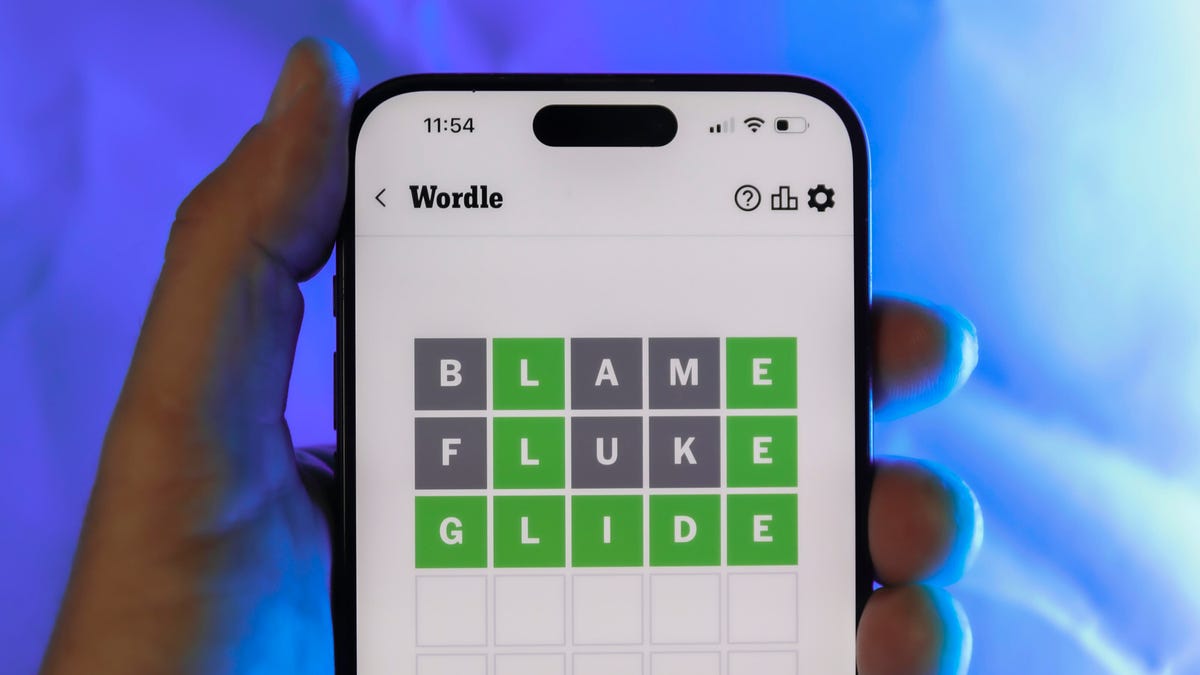
Looking for the most recent Wordle answer? Click here for today’s Wordle hints, as well as our daily answers and hints for The New York Times Mini Crossword, Connections, Connections: Sports Edition and Strands puzzles.
Today’s Wordle puzzle came together pretty quickly for me this time. If you need a new starter word, check out our list of which letters show up the most in English words. If you need hints and the answer, read on.
Read more: New Study Reveals Wordle’s Top 10 Toughest Words of 2025
Today’s Wordle hints
Before we show you today’s Wordle answer, we’ll give you some hints. If you don’t want a spoiler, look away now.
Wordle hint No. 1: Repeats
Today’s Wordle answer has no repeated letters.
Wordle hint No. 2: Vowels
Today’s Wordle answer has one vowel.
Wordle hint No. 3: First letter
Today’s Wordle answer begins with B.
Wordle hint No. 4: Last letter
Today’s Wordle answer ends with H.
Wordle hint No. 5: Meaning
Today’s Wordle answer can refer to a quantity of goods produced at one time.
TODAY’S WORDLE ANSWER
Today’s Wordle answer is BATCH.
Yesterday’s Wordle answer
Yesterday’s Wordle answer, Dec. 26, No. 1651 was SPEED.
Recent Wordle answers
Dec. 22, No. 1647: CONCH
Dec. 23, No. 1648: GLINT
Dec. 24, No. 1649: SPOOL
Dec. 25, No. 1650: PRISM
Don’t miss any of our unbiased tech content and lab-based reviews. Add CNET as a preferred Google source.
-

 Technologies3 года ago
Technologies3 года agoTech Companies Need to Be Held Accountable for Security, Experts Say
-

 Technologies3 года ago
Technologies3 года agoBest Handheld Game Console in 2023
-

 Technologies3 года ago
Technologies3 года agoTighten Up Your VR Game With the Best Head Straps for Quest 2
-

 Technologies4 года ago
Technologies4 года agoBlack Friday 2021: The best deals on TVs, headphones, kitchenware, and more
-

 Technologies4 года ago
Technologies4 года agoVerum, Wickr and Threema: next generation secured messengers
-

 Technologies4 года ago
Technologies4 года agoGoogle to require vaccinations as Silicon Valley rethinks return-to-office policies
-

 Technologies4 года ago
Technologies4 года agoOlivia Harlan Dekker for Verum Messenger
-

 Technologies4 года ago
Technologies4 года agoiPhone 13 event: How to watch Apple’s big announcement tomorrow
